44 reading food labels for cholesterol
How To Read Nutrition Labels - Mayo Clinic Diet The % Daily Value (DV) tells you how much a nutrient in a serving of food contributes to a daily diet. 2,000 calories a day is used for general nutrition advice. Low is 5% or less. Aim for low in saturated fat, trans fat, cholesterol, sodium, and added sugars. High is 20% or more. Aim high in vitamins, minerals and dietary fiber. 4. Figuring Out Food Labels (for Kids) - Nemours KidsHealth A food with 5% or less of a nutrient is low in that nutrient. A food with 10%–19% of a nutrient is a good source of that nutrient. A food with 20% or more of a nutrient is high in that nutrient. The information on food labels is based on an average adult diet of 2,000 calories per day.
Understanding Ingredients on Food Labels | American Heart ... Mar 06, 2017 · These fats raise your bad cholesterol (LDL) and decrease your good cholesterol (HDL). Some experts say you should choose foods with five or fewer ingredients. While this “five-limit rule” has gotten a lot of attention lately, Kris-Etherton said there’s no reason to complicate your label reading to this degree.

Reading food labels for cholesterol
How to Read Food Labels : Food Network | Food Network The percent of the Daily Value that is listed on the upper portion of the food label is yet another way to gauge how much saturated fat and cholesterol are in the foods that you buy and... How to Read Food Labels Without Being Tricked - Healthline Aug 19, 2020 · Reading labels can be tricky. Consumers are more health-conscious than ever, so some food manufacturers use misleading tricks to convince people to buy highly processed and unhealthy products. How To Read Food and Beverage Labels - National Institute on Aging Although frozen and canned fruits and vegetables have food labels, fresh varieties often do not. You can find nutrition information for fresh vegetables and fruits on the USDA website. Or you can call the U.S. Department of Agriculture's Food and Nutrition Information Center at 301-504-5414. Understanding percent Daily Value (% DV)
Reading food labels for cholesterol. Making Sense of Food Labels | ADA - American Diabetes Association Trying to figure out nutritional information on labels and packaging isn't easy. The good news is that we can help. These food labels are especially helpful if you use carb counting to plan your meals! If you get tripped up on food content claims, you're not alone. Fat free vs. low fat vs. reduced fat. Low cholesterol vs. reduced cholesterol. How to Read the Nutrition Facts Label on Packaged Foods - WebMD Limit salt to 2,300 milligrams (about 1 teaspoon) daily. If you have high blood pressure, kidney disease, or diabetes, or are African-American or older than 51, your daily limit is lower: 1,500... Why Is Reading Food Labels Important? | livestrong Understanding what's in the foods you eat helps you make healthier choices. Checking food labels also makes it easy for you to compare the nutrient content of different options. A healthy diet is crucial throughout your lifetime and paying attention to nutrition labels is a good step toward improving your overall diet. How To Read Cholesterol Labels - HealthyCholesterolClub.com If 1 serving of a food has 120 mg of sodium, it can technically be labeled as a low sodium food. However, if you eat 3 servings, triple that number, and now youre consuming 360 mg of sodium, which no longer falls into the low sodium category . Bottom line: When youre reading your labels, always consider the servings.
How to Read Food Labels for a Heart-Healthy Diet Partially hydrogenated oil Omega-3 fatty acid Olive oil Butter What's important to know about the first ingredient listed on a label? It's the healthiest. It's in the largest quantity. It's first due to alphabetical order. What words should I look out for that mean sugar? High-fructose corn syrup Agave nectar Dehydrated cane juice All of the above How to Understand and Use the Nutrition Facts Label | FDA Dietary fiber, vitamin D, calcium, iron ad potassium are nutrients on the label that Americans generally do not get the recommended amount of. They are identified as nutrients to get more of.... Reading food labels: Tips if you have diabetes - Mayo Clinic Look for foods with fats, cholesterol and sodium on the low end of the Daily Value; keep fiber, vitamins and minerals on the high end. If your doctor or registered dietitian recommends more or less than 2,000 calories a day, you may need to adjust the percentage accordingly — or simply use the percentage as a general frame of reference. How to read food labels | healthdirect Saturated fats are linked to an increased risk of heart disease and high blood cholesterol, so it is especially important to choose foods low in saturated fat. Carbohydrate (total): Carbohydrates are found in all fruit and vegetables, all breads and grain products, and sugar and sugary foods. You need carbohydrates for energy. Click to open PDF.
Easy Guide to Understanding Food Labels When You Have High Cholesterol ... This means that your food may contain trans-fat even if the food label says 0 gram. Therefore it's important to check the ingredient list (more on this later). Cholesterol guidelines currently recommend having not more than 300 milligrams of cholesterol per day, and if you have heart disease, aim for less than 200 milligrams per day. 2. Food Labels: Fat & Cholesterol | Home & Garden Information Center Limit these sources of unhealthy fat and cholesterol in the list of ingredients: animal fat (beef, ham, pork, bacon, lamb, chicken, turkey), lard, hardened fat or oil, egg and egg-yolk solids, cream, butter, whole-milk solids, palm oil, palm kernel oil, hydrogenated vegetable oil, vegetable shortening, coconut, coconut oil, and cocoa butter. How to read food labels: MedlinePlus Medical Encyclopedia Whole-grain breads, fruits and vegetables, and beans and legumes are high in fiber. Check the total fat in 1 serving. Pay special attention to the amount of saturated fat in 1 serving. Choose foods that are low in saturated fat. For example, drink skim or 1% milk instead of 2% or whole milk. Skim milk has only a trace of saturated fat. How to Tell if Foods Are Low or High Cholesterol - Verywell Health Each food label should include milligrams (mg) of cholesterol per serving. Don't forget to look at the serving size as well. Sometimes products can seem low in cholesterol, but if you eat more than the recommended servings at one sitting, then you can end up consuming a lot more cholesterol than you intended.
Understanding Food Nutrition Labels | American Heart Association 1 - Start with the serving information at the top. This will tell you the size of a single serving and the total number of servings per container (package). 2 - Next, check total calories per serving and container. Pay attention to the calories per serving and how many calories you're really consuming if you eat the whole package.
Reading Food Labels | ADA - American Diabetes Association Understanding Food Labels It's time to decode those food claims. Trying to figure out nutritional information on labels and packaging isn't easy. The good news is that we can help. Untangle packaging claims. If you get tripped up on food content claims, you're not alone. Fat free vs. low fat vs. reduced fat. Low cholesterol vs. reduced cholesterol.
Should I check the cholesterol on nutrition labels? Major dietary cholesterol contributors — meat, fish, and chicken — often have no label. Having less than 4-6 oz of those per day and less than 2-4 eggs per week will generally keep your cholesterol reasonable. And that's a smart idea anyhow, to leave room for more artery-friendly fruits, veg, whole grains, beans, nuts, seeds, etc."
Reading Food Nutrition Labels 101 and How to Decode Them The cholesterol content of a food is measured in milligrams. The key here is to eat less than 300 milligrams of dietary cholesterol per day. When a food product contains two grams of saturated fat, these claims are allowed. Cholesterol-free - less than two milligrams of cholesterol and two grams or less of saturated fat per serving.
How to read food labels Information | Mount Sinai - New York Always check the serving size first. All the information on the label is based on the serving size. Many packages contain more than 1 serving. For example, the serving size for spaghetti is most often 2 ounces (56 grams) uncooked, or 1 cup (0.24 liters) cooked. If you eat 2 cups (0.48 liters) at a meal, you are eating 2 servings.
How To Read Food and Beverage Labels - National Institute on Aging Although frozen and canned fruits and vegetables have food labels, fresh varieties often do not. You can find nutrition information for fresh vegetables and fruits on the USDA website. Or you can call the U.S. Department of Agriculture's Food and Nutrition Information Center at 301-504-5414. Understanding percent Daily Value (% DV)
How to Read Food Labels Without Being Tricked - Healthline Aug 19, 2020 · Reading labels can be tricky. Consumers are more health-conscious than ever, so some food manufacturers use misleading tricks to convince people to buy highly processed and unhealthy products.
How to Read Food Labels : Food Network | Food Network The percent of the Daily Value that is listed on the upper portion of the food label is yet another way to gauge how much saturated fat and cholesterol are in the foods that you buy and...

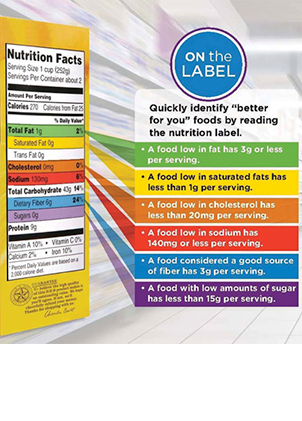

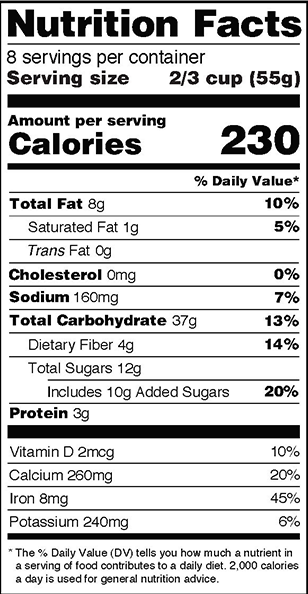

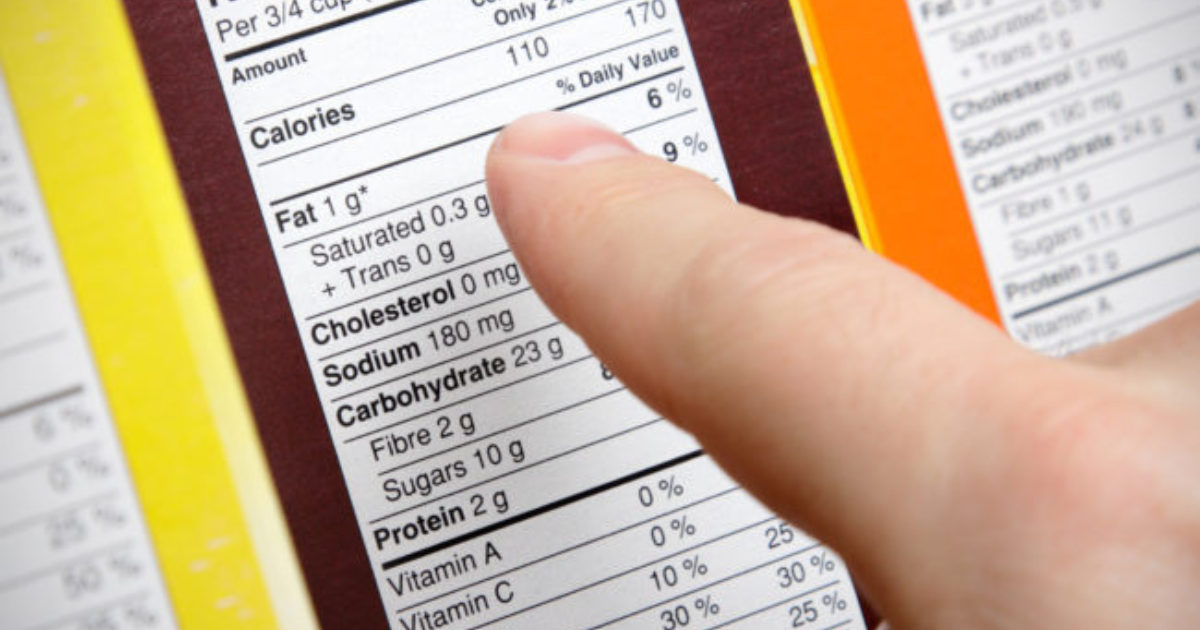
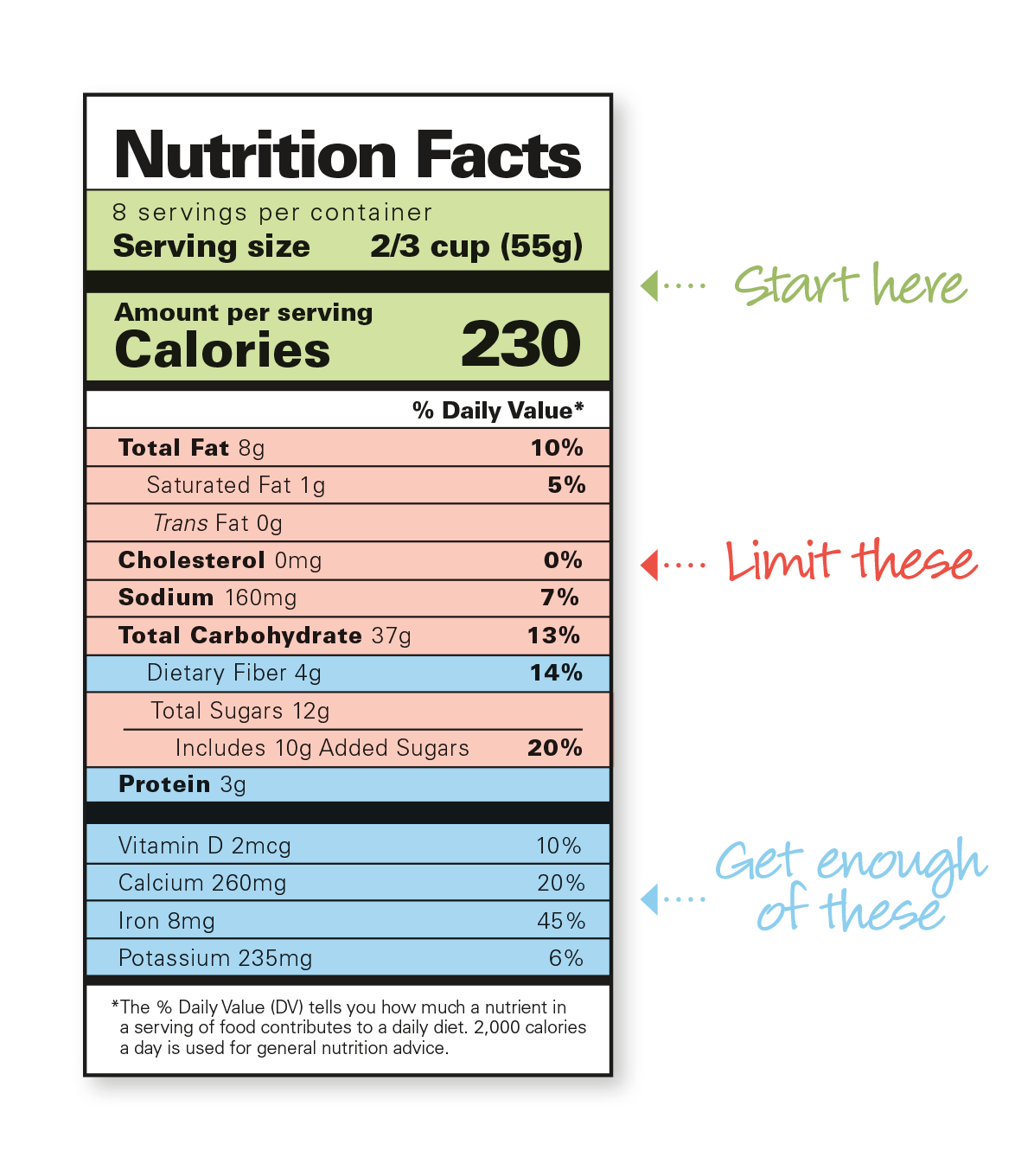

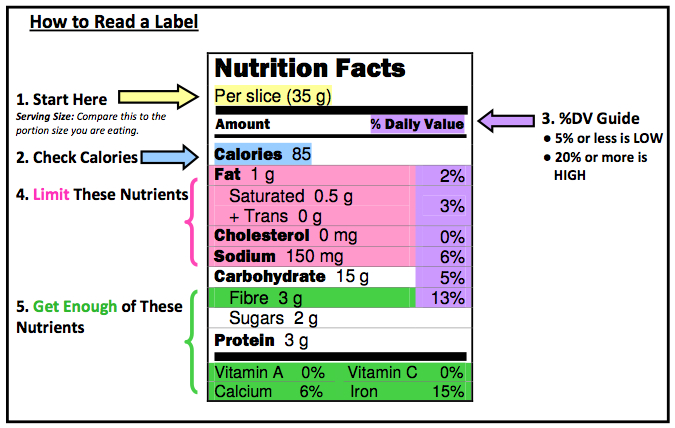

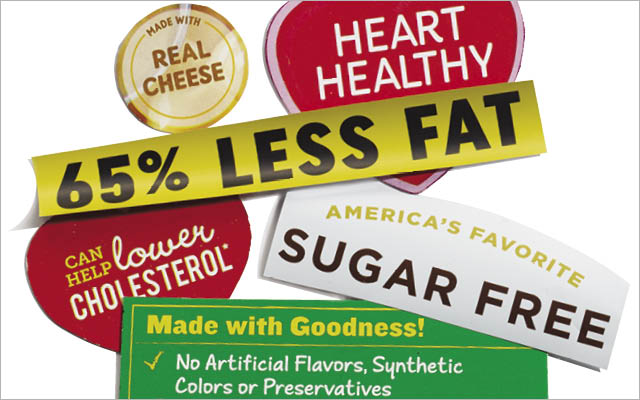


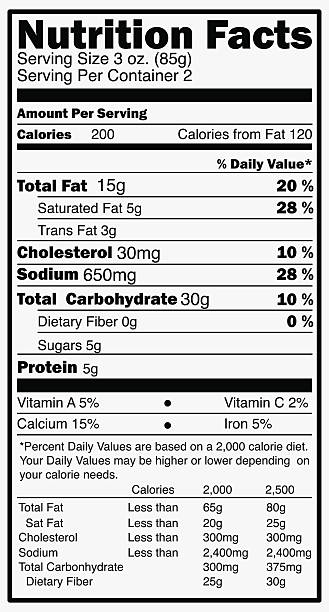



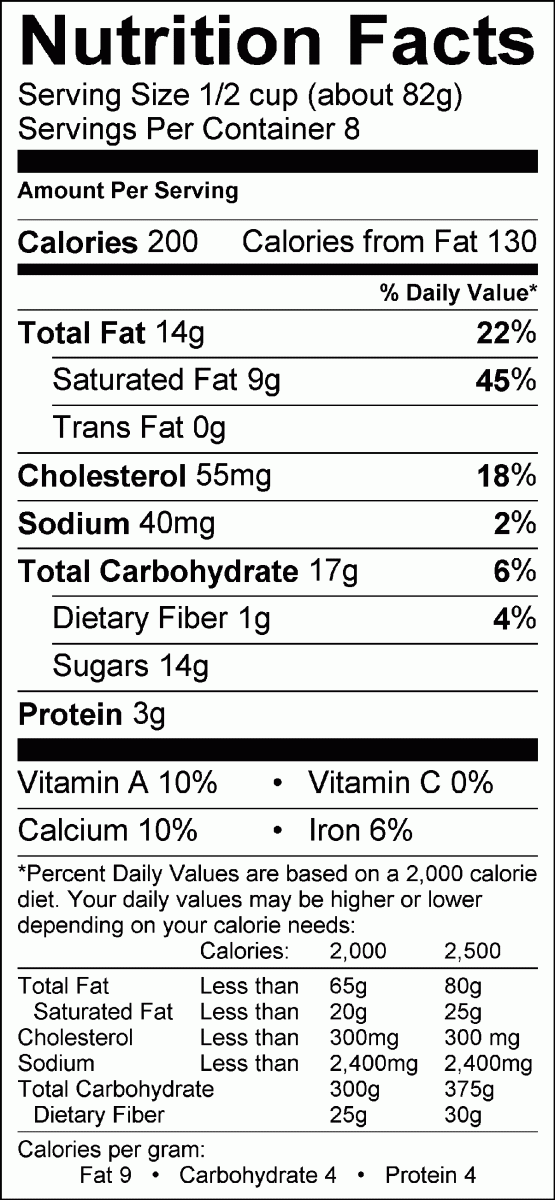
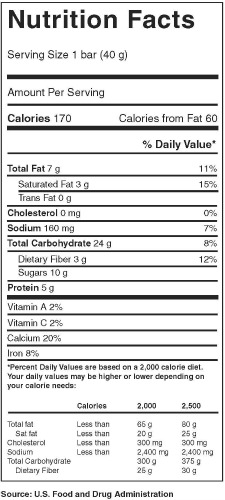
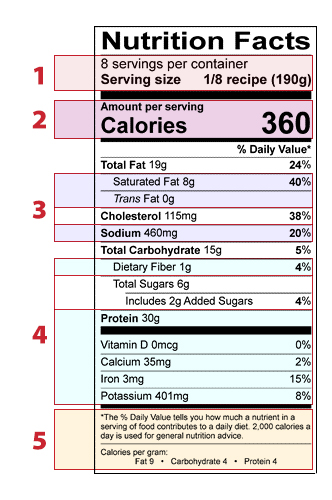

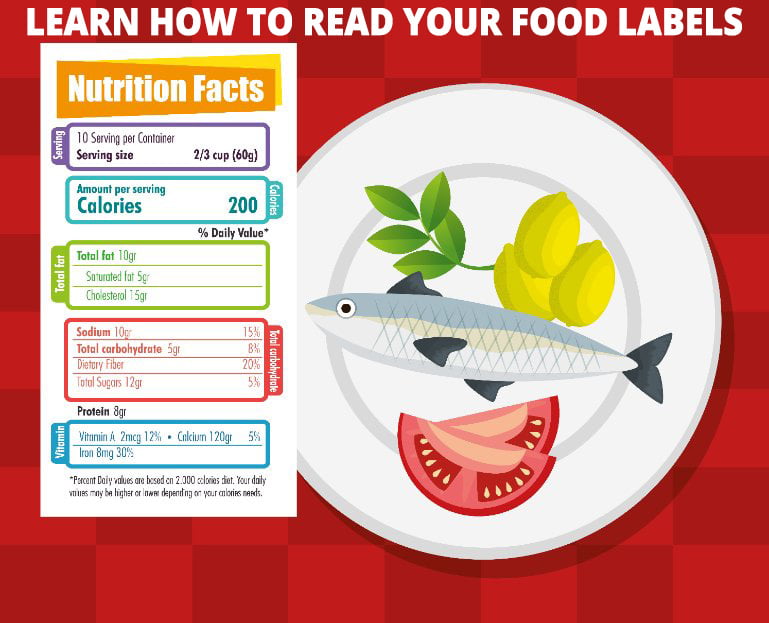



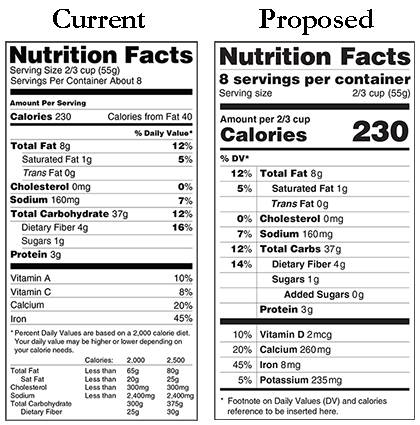
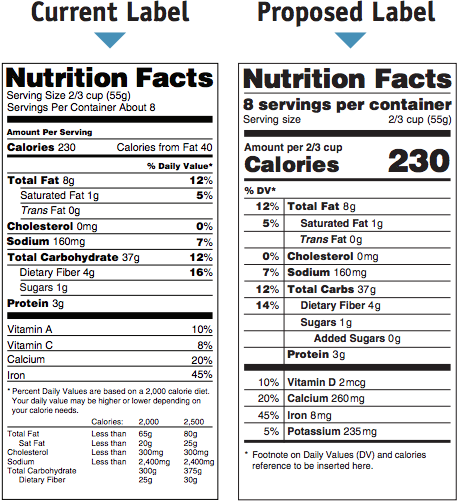
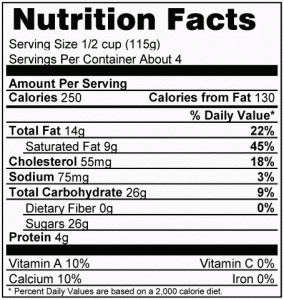

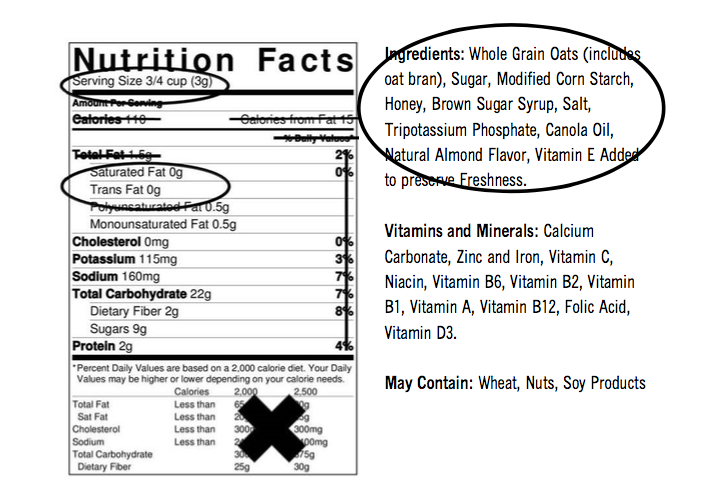
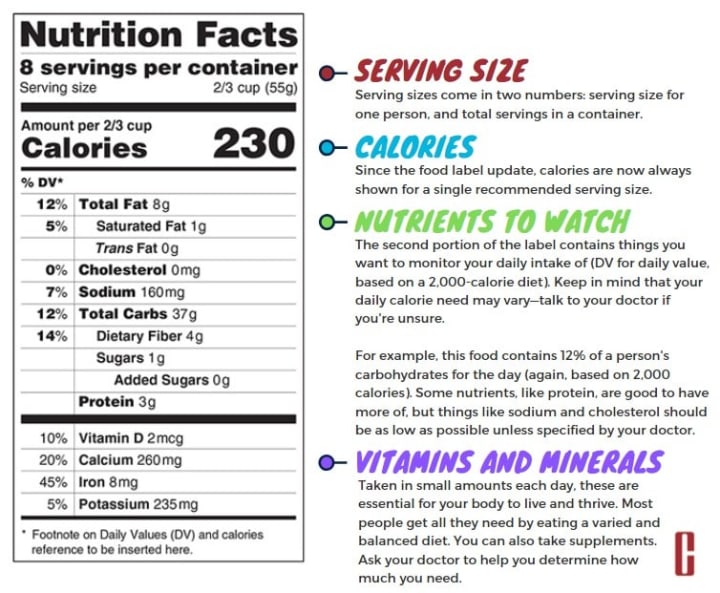
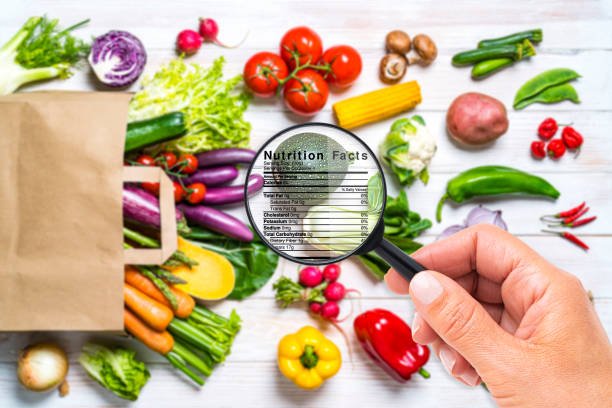


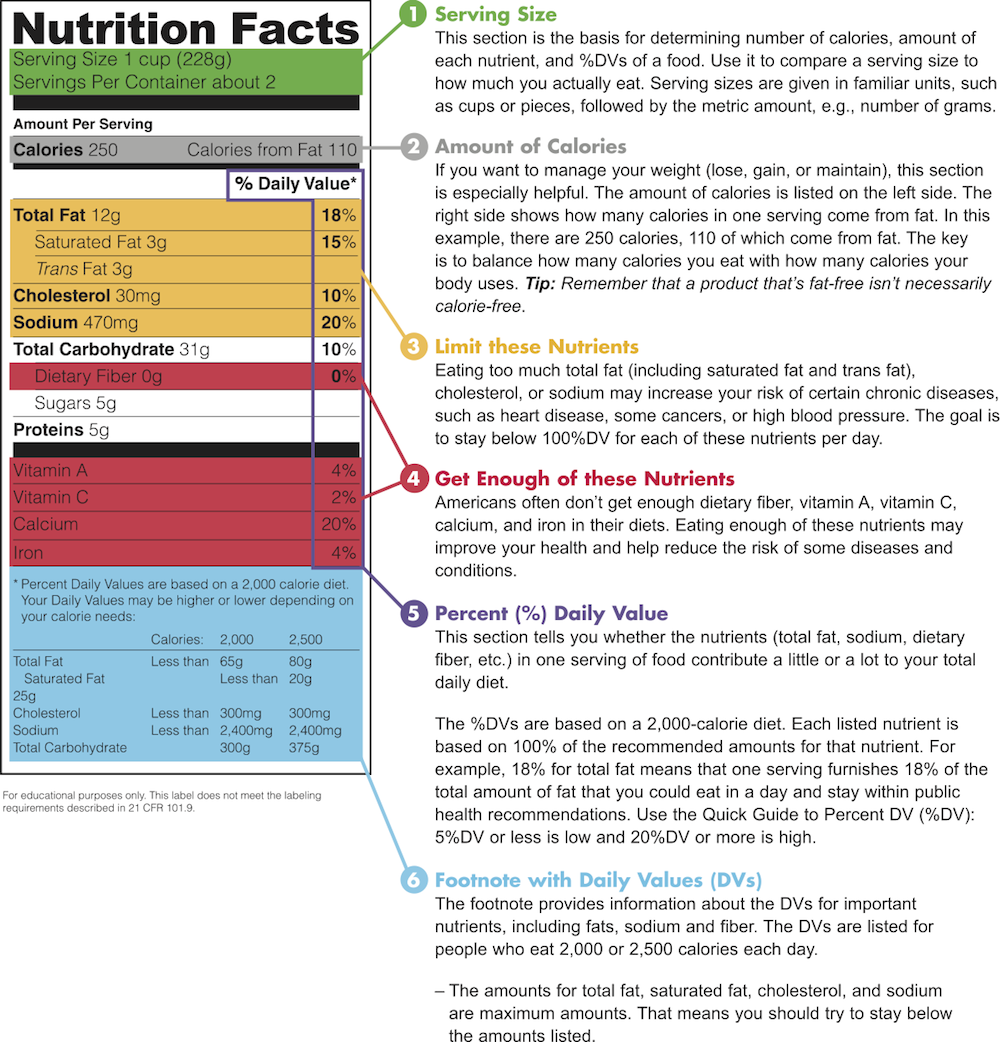
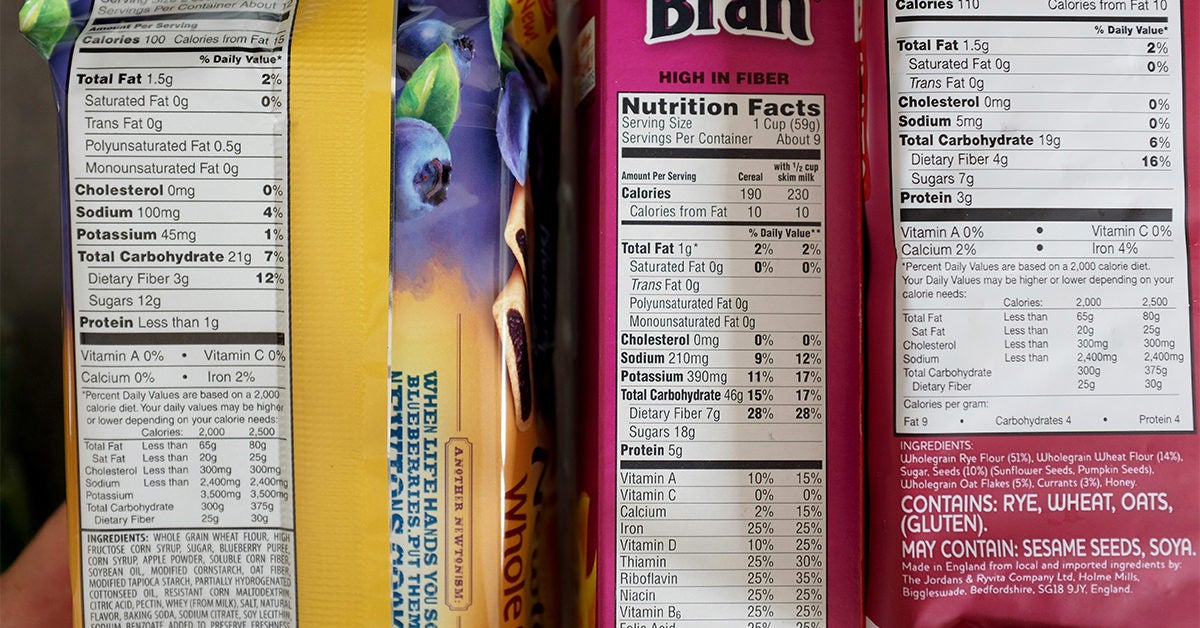
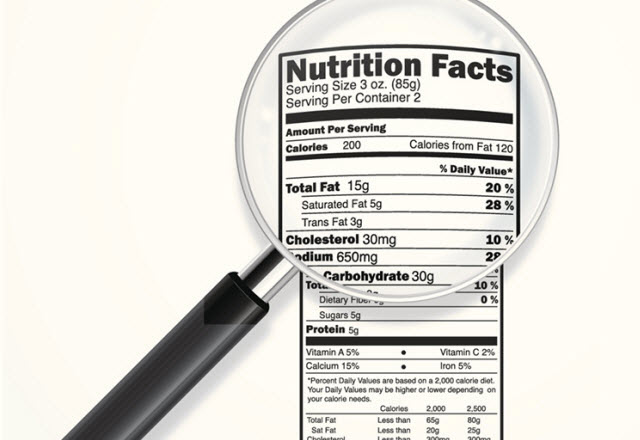

Post a Comment for "44 reading food labels for cholesterol"